
NVIDIA GeForce GTX 560 Ti
Written by John Yan on 1/25/2011 for
PC
More On:
GeForce GTX 560 Ti
NVIDIA recently released the GeForce 5XX line of cards that give them the title of the fastest single GPU around. Well, not everyone can afford to put out a lot that much money for a video card, so NVIDIA’s addressing the needs of those gamers with today’s release of the GeForce GTX 560 Ti.
Built to replace the GeForce GTX 470 card and aimed at the AMD Radeon HD 6870, the GeForce GTX 560 Ti is a Fermi based card containing 384 CUDA cores, 64 texture units, and 32 ROP units in 2 graphics processing clusters. The GPU is clocked at 822MHz with the CUDA cores clocked at 1644MHz and 4008MHz for the memory. You’re looking at 1GB of GDD5 memory with a 256-bit memory interface.

Measuring at 9.5”, it should fit most cases unlike the behemoths such as the GeForce GTX 580. On the outside, there are 2 Dual-Link DVI connectors and one mini-HDMI connector. The dual slot card needs two six-pin power connectors and has a TDP of 170 Watts. Compared to the 6870 though, it is 20 Watts more so it has the potential to draw a little bit more power on load. There’s only one SLI connector so you’ll only be able to pair this card up with another GeForce GTX 560 Ti card.
Because this is a Fermi card, you can pretty much expect all the same features as mentioned in my previous reviews of Fermi cards. Features such as CUDA parallel computing, 3D Vision support, PhysX support, and NVIDIA surround, which lets you use three displays, are all available in the GeForce GTX 560 Ti. I won’t go into this too much with the GTX 560 Ti, but there are some really good features that games use when you play with a NVIDIA card.
For testing, I’m going with my previous system as my i7-2600K setup wasn’t ready in time to really put this card and others through its paces in time for this article to be done. So, with that in mind, my test system consisted of:
Intel i7-860
4GB of ram
MSI P55A-GD65
Windows 7 Ultimate Edition
Catalyst 10.10 drivers for Radeon cards
NVIDIA 266.58 drivers for GeForce GTX 560 Ti card
NVIDIA 260.99 drivers for GeForce GTX 480 card
I’ll be comparing the GeForce GTX 560 Ti to the AMD Radeon HD 6870, AMD Radeon HD 6850, and the GeForce GTX 480 card. Remember, the GeForce GTX 560 Ti is made to compete with the Raden HD 6870, but I’ve included the other cards just for comparison sakes.
The first benchmark is the newly released 3D Mark 11. Futuremark’s newest synthetic benchmark takes a card through its paces and is geared towards DirectX 11 performance. There are six new benchmarks utilizing various DirectX 11 features as well as a whole other suite of CPU tests.
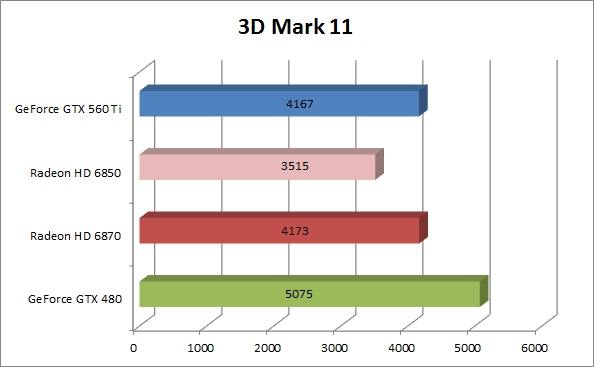
Now let’s get to the games. All the games were tested at a resolution of 1920x1080. Up first will be one of my favorites, Left 4 Dead 2. I recorded the end of Dark Carnival with my character being on God mode. Tests were run using the replay system of the game and three playbacks were done. What you see is the average of the three playbacks.
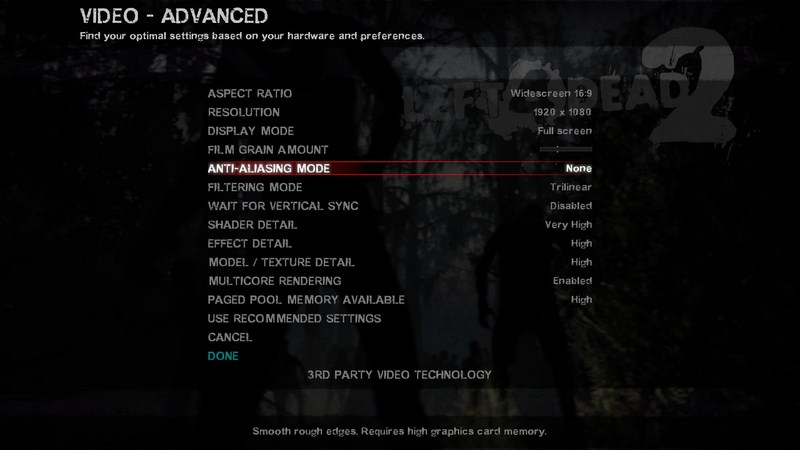
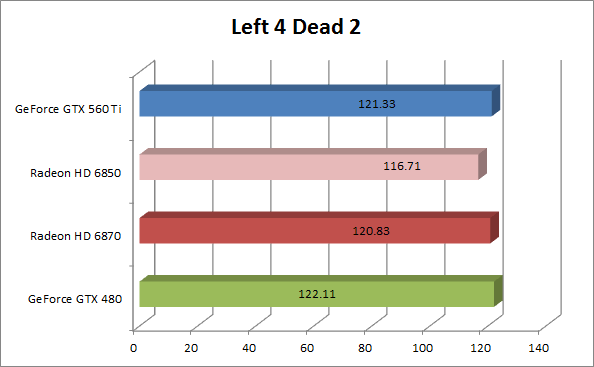
Just Cause 2 is up next and I’ve used the built in benchmark program here. Again, three iterations were done with the average shown below. I used the Concrete Jungle benchmark here where it does a flyby through a city area while adjusting the daylight that’s casted.
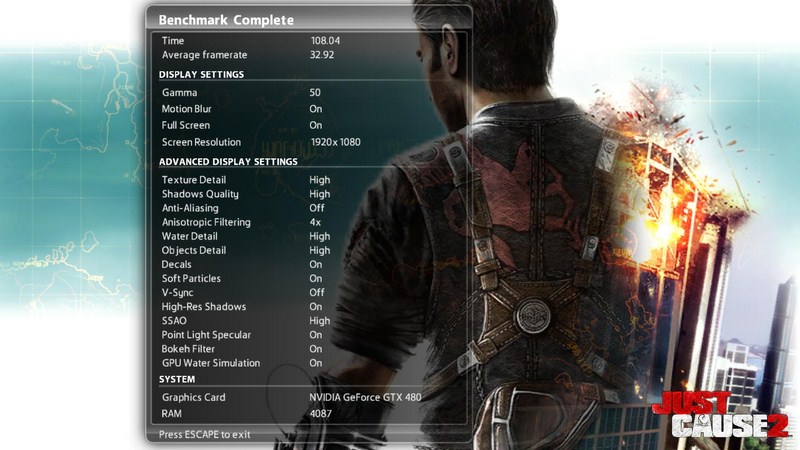
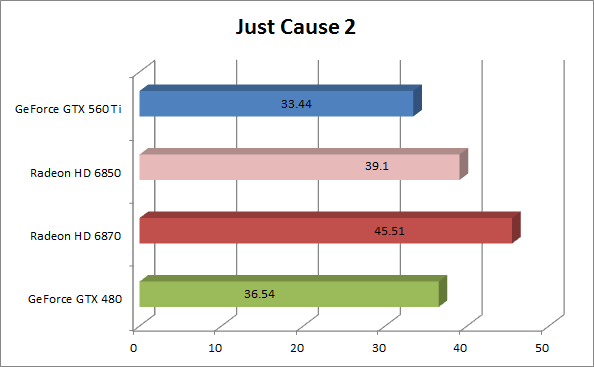
The Heaven Benchmark using Unigine is up next and this test known for its DirectX 11 visuals using tessellation. The benchmark was ran three times with the scores averaged out.
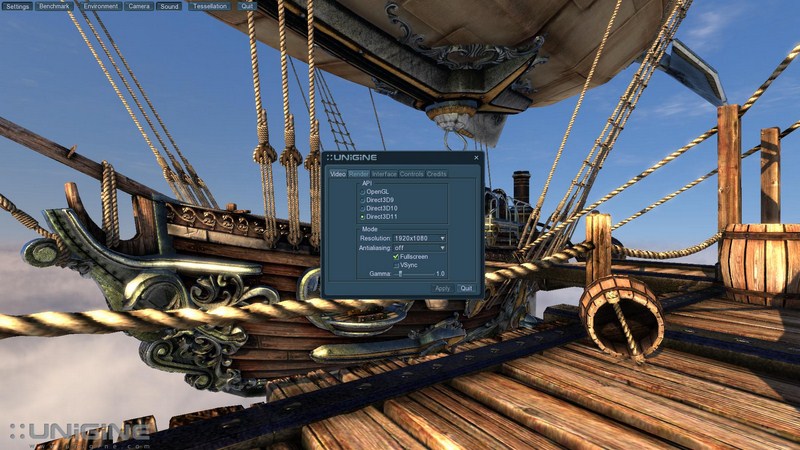
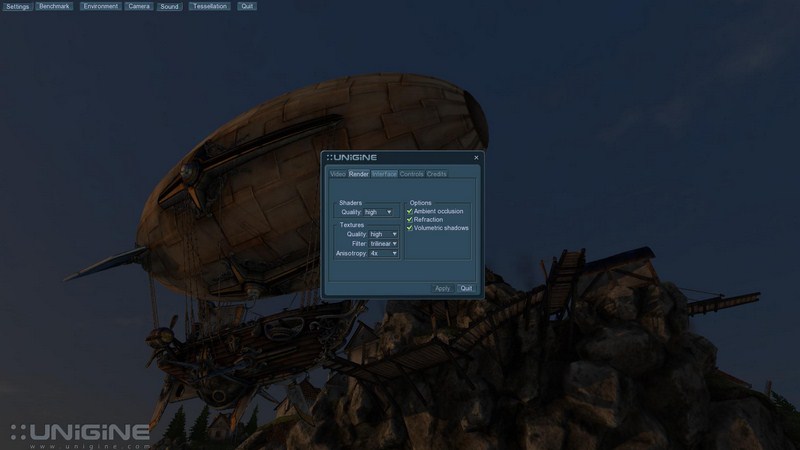
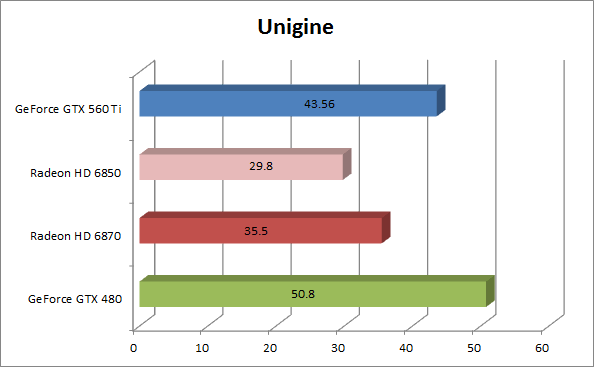 Metro 2033 is another DirectX 11 game that I used to test the cards. With a patch, a benchmark was added to the game that I used. DirectX 11 and tesselation was turned on.
Metro 2033 is another DirectX 11 game that I used to test the cards. With a patch, a benchmark was added to the game that I used. DirectX 11 and tesselation was turned on.
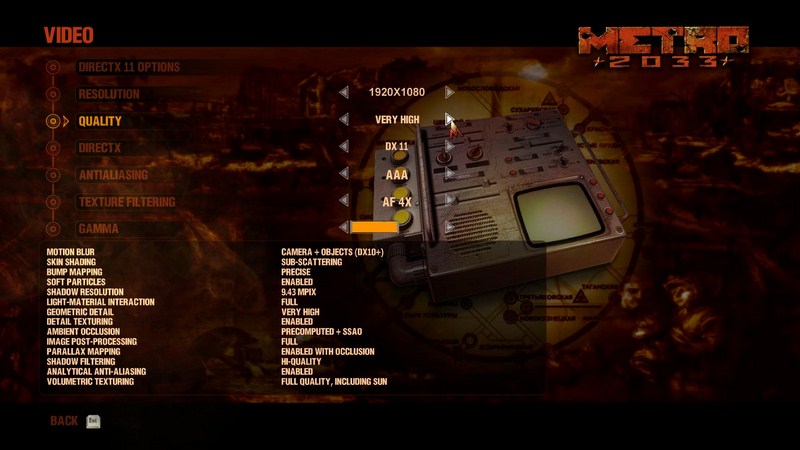
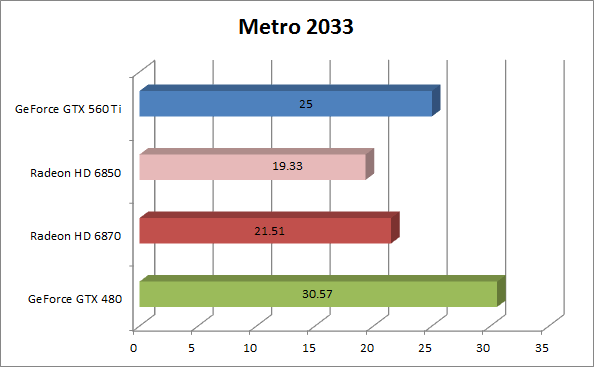
For the next test, Mafia II was ran with PhysX turned off. Since PhysX is a NVIDIA specific feature, I decided to leave that off for the tests. The benchmark runs through a level with a few characters and as with the other tests, three runs were done with the average presented.
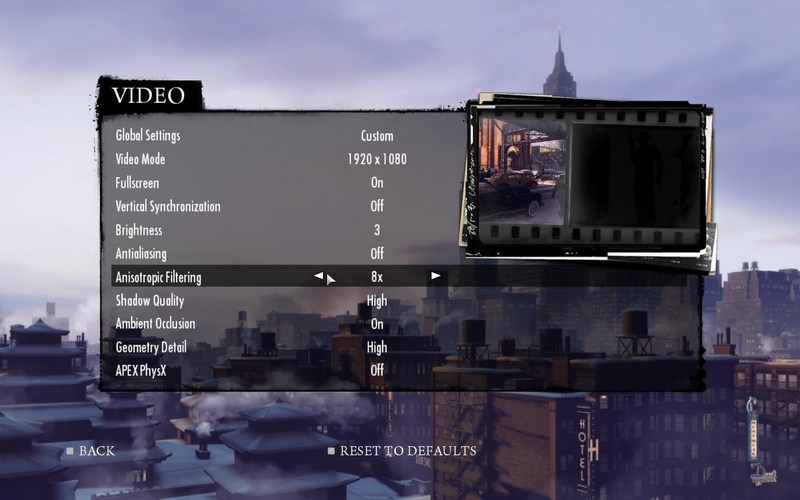
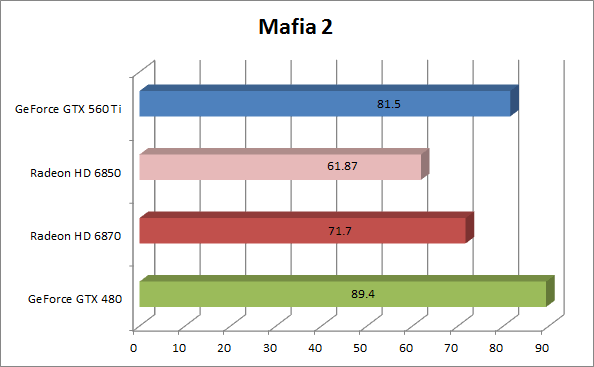
F1 2010 is up next as this racing game is another game that uses DirectX 11 and as with some of the games I used, a recent patch added a benchmark where it runs through one lap around the track. The action is a little different each time, but the result seems to be pretty consistent. The benchmark only uses integers for the average framerate, but averaging the scores out can produce decimal numbers.
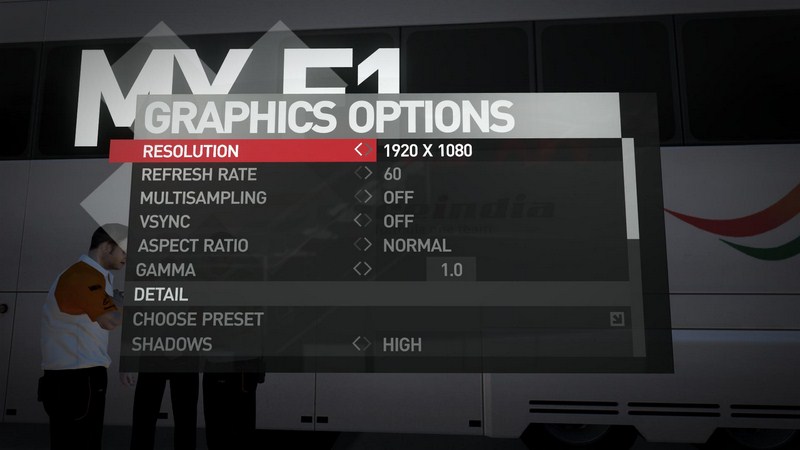
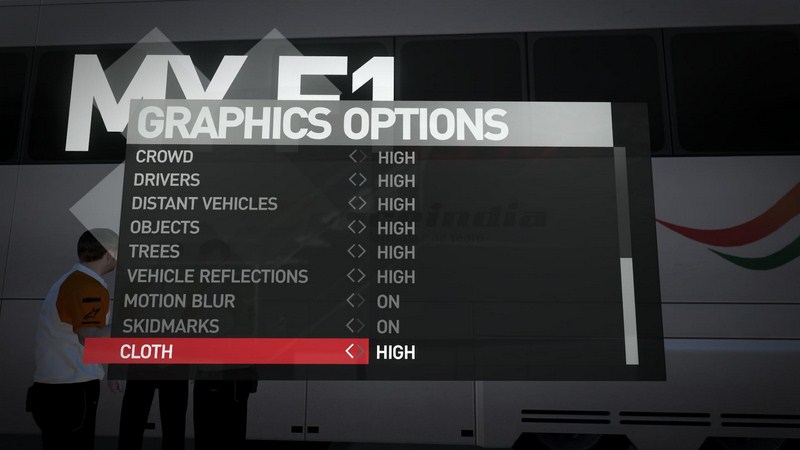
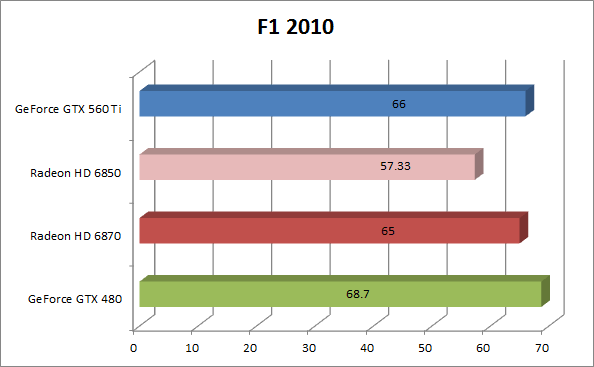
Finally, Call of Duty: Black Ops is presented and since there’s no built in benchmark, I decided to use Fraps to record the performance. I ran the beginning of the Khe Sanh mission where you get driven around in a jeep before all hell breaks loose. Since this part of the game is pretty repeatable, I decided to use the beginning up until you are asked to follow Woods while carrying Hudson.
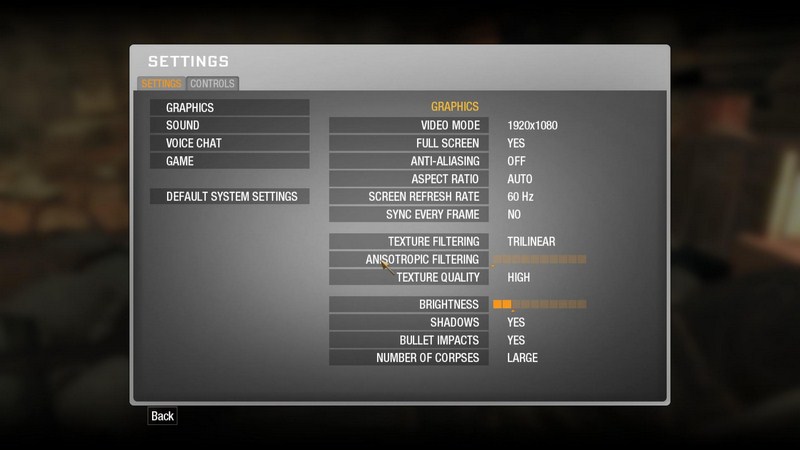
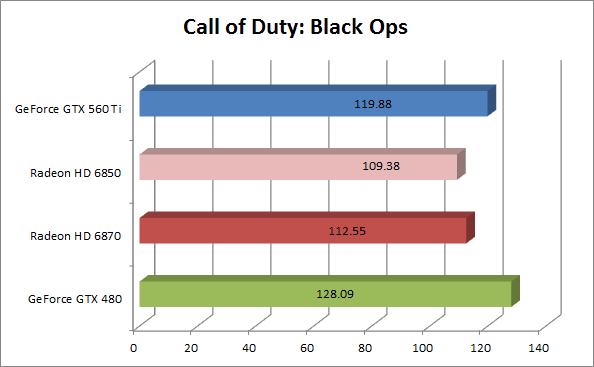
Performance wise, the GeForce GTX 560 Ti came ahead in most of the tests against the Radeon HD 6870 card. At roughly $20 more, you’re getting better performance than the comparable Radeon card pretty much across the board. The MSRP for the GeForce GTX 560 Ti is $249, which falls right in line with those wanting to spend for a good mid-range card in the upper echelon.
Of course, you’ll be able to turn on some of the extra features such as PhysX if the game supports it, something that the Radeon cards can’t do. I can’t say that you’ll only be able to get 3D through NVIDIA now with AMD’s recent 3D initiative and I can’t even say which experience is better since I don’t have an AMD 3D setup to compare it with, but I can say from experience that the 3D that you get with NVIDIA’s solution is quite fun when the game’s support is done well.
I was overall very happy with what I saw coming out with NVIDIA with the GeForce GTX 560 Ti. It’s got the features that were presented with the release of the GeForce GTX 570 and GeForce GTX 580 such as the new cooling solution, running at a lower power and cooler temperatures, quieter in operation, and improved PCB. At launch, various board partners will have some variants as well with Gigabyte releasing a 1GHz version of the same board. That says to me the GeForce GTX 560 Ti has some wiggle room for you to overclock for those parties interested. Yes, the Radeon 6870 was released a few months ago, but the GeForce GTX 560 Ti bests it in most tests real world tests and seems like it offers room to do a little more with some tweaks. The GeForce GTX 560 Ti gives NVIDIA a nice card to compete with AMD in a very competitive sector of the gaming public.
Built to replace the GeForce GTX 470 card and aimed at the AMD Radeon HD 6870, the GeForce GTX 560 Ti is a Fermi based card containing 384 CUDA cores, 64 texture units, and 32 ROP units in 2 graphics processing clusters. The GPU is clocked at 822MHz with the CUDA cores clocked at 1644MHz and 4008MHz for the memory. You’re looking at 1GB of GDD5 memory with a 256-bit memory interface.

Measuring at 9.5”, it should fit most cases unlike the behemoths such as the GeForce GTX 580. On the outside, there are 2 Dual-Link DVI connectors and one mini-HDMI connector. The dual slot card needs two six-pin power connectors and has a TDP of 170 Watts. Compared to the 6870 though, it is 20 Watts more so it has the potential to draw a little bit more power on load. There’s only one SLI connector so you’ll only be able to pair this card up with another GeForce GTX 560 Ti card.
Because this is a Fermi card, you can pretty much expect all the same features as mentioned in my previous reviews of Fermi cards. Features such as CUDA parallel computing, 3D Vision support, PhysX support, and NVIDIA surround, which lets you use three displays, are all available in the GeForce GTX 560 Ti. I won’t go into this too much with the GTX 560 Ti, but there are some really good features that games use when you play with a NVIDIA card.
For testing, I’m going with my previous system as my i7-2600K setup wasn’t ready in time to really put this card and others through its paces in time for this article to be done. So, with that in mind, my test system consisted of:
Intel i7-860
4GB of ram
MSI P55A-GD65
Windows 7 Ultimate Edition
Catalyst 10.10 drivers for Radeon cards
NVIDIA 266.58 drivers for GeForce GTX 560 Ti card
NVIDIA 260.99 drivers for GeForce GTX 480 card
I’ll be comparing the GeForce GTX 560 Ti to the AMD Radeon HD 6870, AMD Radeon HD 6850, and the GeForce GTX 480 card. Remember, the GeForce GTX 560 Ti is made to compete with the Raden HD 6870, but I’ve included the other cards just for comparison sakes.
The first benchmark is the newly released 3D Mark 11. Futuremark’s newest synthetic benchmark takes a card through its paces and is geared towards DirectX 11 performance. There are six new benchmarks utilizing various DirectX 11 features as well as a whole other suite of CPU tests.

Now let’s get to the games. All the games were tested at a resolution of 1920x1080. Up first will be one of my favorites, Left 4 Dead 2. I recorded the end of Dark Carnival with my character being on God mode. Tests were run using the replay system of the game and three playbacks were done. What you see is the average of the three playbacks.


Just Cause 2 is up next and I’ve used the built in benchmark program here. Again, three iterations were done with the average shown below. I used the Concrete Jungle benchmark here where it does a flyby through a city area while adjusting the daylight that’s casted.


The Heaven Benchmark using Unigine is up next and this test known for its DirectX 11 visuals using tessellation. The benchmark was ran three times with the scores averaged out.





For the next test, Mafia II was ran with PhysX turned off. Since PhysX is a NVIDIA specific feature, I decided to leave that off for the tests. The benchmark runs through a level with a few characters and as with the other tests, three runs were done with the average presented.


F1 2010 is up next as this racing game is another game that uses DirectX 11 and as with some of the games I used, a recent patch added a benchmark where it runs through one lap around the track. The action is a little different each time, but the result seems to be pretty consistent. The benchmark only uses integers for the average framerate, but averaging the scores out can produce decimal numbers.



Finally, Call of Duty: Black Ops is presented and since there’s no built in benchmark, I decided to use Fraps to record the performance. I ran the beginning of the Khe Sanh mission where you get driven around in a jeep before all hell breaks loose. Since this part of the game is pretty repeatable, I decided to use the beginning up until you are asked to follow Woods while carrying Hudson.


Performance wise, the GeForce GTX 560 Ti came ahead in most of the tests against the Radeon HD 6870 card. At roughly $20 more, you’re getting better performance than the comparable Radeon card pretty much across the board. The MSRP for the GeForce GTX 560 Ti is $249, which falls right in line with those wanting to spend for a good mid-range card in the upper echelon.
Of course, you’ll be able to turn on some of the extra features such as PhysX if the game supports it, something that the Radeon cards can’t do. I can’t say that you’ll only be able to get 3D through NVIDIA now with AMD’s recent 3D initiative and I can’t even say which experience is better since I don’t have an AMD 3D setup to compare it with, but I can say from experience that the 3D that you get with NVIDIA’s solution is quite fun when the game’s support is done well.
I was overall very happy with what I saw coming out with NVIDIA with the GeForce GTX 560 Ti. It’s got the features that were presented with the release of the GeForce GTX 570 and GeForce GTX 580 such as the new cooling solution, running at a lower power and cooler temperatures, quieter in operation, and improved PCB. At launch, various board partners will have some variants as well with Gigabyte releasing a 1GHz version of the same board. That says to me the GeForce GTX 560 Ti has some wiggle room for you to overclock for those parties interested. Yes, the Radeon 6870 was released a few months ago, but the GeForce GTX 560 Ti bests it in most tests real world tests and seems like it offers room to do a little more with some tweaks. The GeForce GTX 560 Ti gives NVIDIA a nice card to compete with AMD in a very competitive sector of the gaming public.
For a mid range card, the GeForce GTX 560 Ti offers up solid performance in a nice quiet card. It's price competitively against the Radeon HD 6870 and manages to beat the AMD card in most of the tests.
Rating: 9 Class Leading
* The product in this article was sent to us by the developer/company.

About Author
I've been reviewing products since 1997 and started out at Gaming Nexus. As one of the original writers, I was tapped to do action games and hardware. Nowadays, I work with a great group of folks on here to bring to you news and reviews on all things PC and consoles.
As for what I enjoy, I love action and survival games. I'm more of a PC gamer now than I used to be, but still enjoy the occasional console fair. Lately, I've been really playing a ton of retro games after building an arcade cabinet for myself and the kids. There's some old games I love to revisit and the cabinet really does a great job at bringing back that nostalgic feeling of going to the arcade.
View Profile



